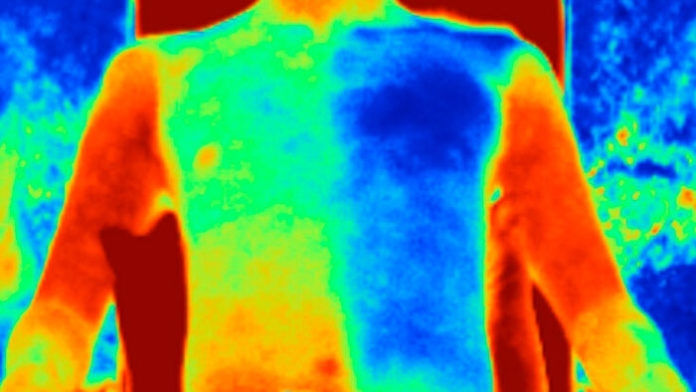Global climate changes on Earth, regular recording of historical maximums of summer temperature pose a challenge for mankind to develop various systems that provide protection from unbearable heat. One of the promising areas is the creation of personal protective equipment like body-cooling metafabric based on the use of thermoregulatory fabrics, from which standard clothing can be produced. This technological direction has received the name of personal heat management (RTM).
Scientists at China’s Huazhong University of Science and Technology in Wuhan have developed an innovative Metafabric that uses nano-coating of titanium oxide (TiO2) nanoparticles. The fabric is covered with a thin layer of polytetrafluoroethylene capable of reflecting light radiation in the visible, infrared, and ultraviolet ranges.
Practical tests have shown that a human body protected by Metafabric can be cooled by approximately 4.8°C more than a body covered with a standard cotton cloth.
The test was carried out in Guangzhou province on a clear sunny day from 11:00 to 15:00 pm. Scientists compared the potential of Metafabric to standard fabrics used in the apparel industry. As a result, the temperature of the surface protected by Metafabric was lower than the surface protected by cotton – by 5°C, spandex – by 6.8°C, chiffon – by 7.0°C, linen – by 5.8°C and natural leather – by 10.2°C.
At the same time, there was an experiment, carried out with the participation of a volunteer wearing a vest, one half of which was covered with Metafabric and the other half with cotton. The thermal imager recorded the temperature from the outside and inside of the vest. As a result, the temperature difference was 3.4°C outside and about 5°C on the inside.
When using Metafabric for a car seat cover, scientists have recorded a 30°C drop in body temperature compared to a car without a protective cover.
The developers note that the Metafabric fabric is only 10% more expensive than its analogues and does not require large investments in setting up the production. The question of changes in Metafabric parameters when dyed in various colors with industrial dyes is being studied now. If interested investors are found, the production of fabrics that protect against heat can be established within one year.







